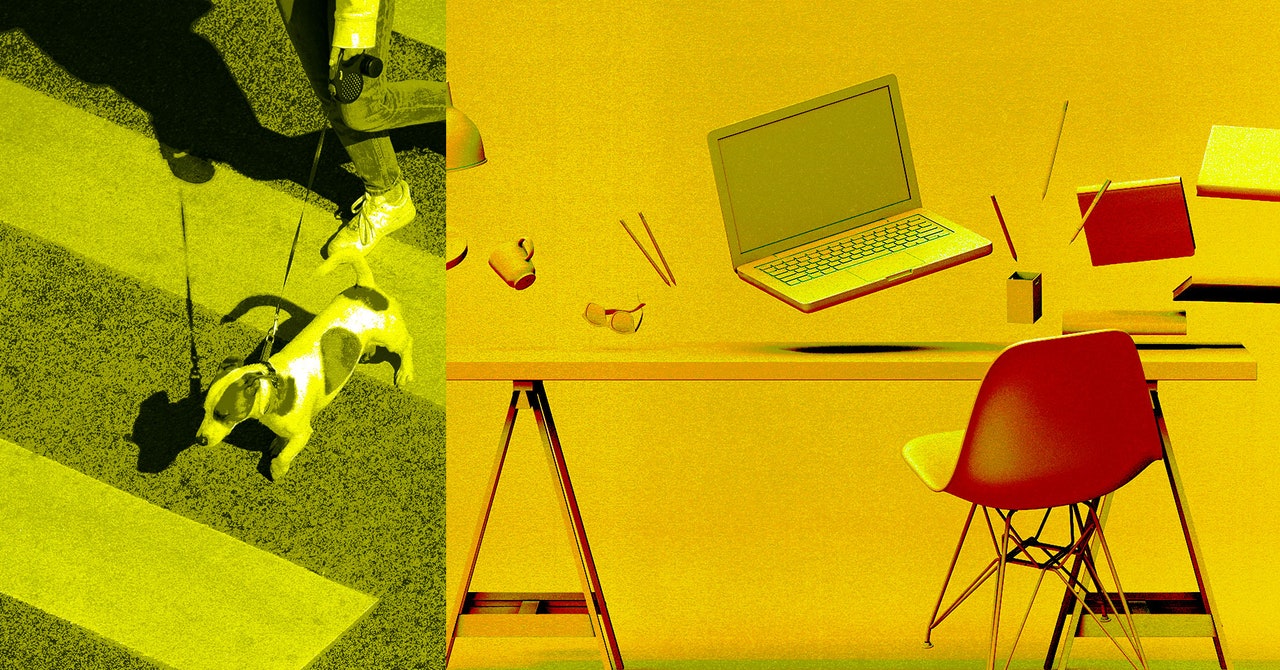Before the pandemic, office buildings and campuses were often constructed almost to a formula, Parker says. The number of employees, percentage of different types of jobs, and predictions about future headcount growth went in one end; out the other came the number of desks and square feet required. Function ruled over form. The design work could even be boring.
Under that model, most offices were structured with about 80 percent of usable, functional floor space for desks and 20 percent for meeting rooms. Designers spent most of their time drawing floor plans with different iterations of desks and offices and tucking conference rooms into the corners. Even before the pandemic, it wasn’t unusual for a third or even half of all desk space to go unused during parts of the day, Kanik says. Companies that did manage to heavily use their space often did so at the expense of making workers feel packed into the open floor plan.
“Something wasn’t working,” says Janet Pogue McLaurin, global director of workplace research at Gensler, who identifies the same sense of pre-2020 formulaic malaise as Parker. “The pandemic provided an opportunity to rethink all that,” she says.
With clients more open to new ideas and taking the time to craft each building for maximum flexibility, specific company needs, and worker appeal, designers and planners see this moment as a rare chance to implement more of their ideals and training. “The overall palette has gotten much richer in terms of what architects and designers are looking at and designing with,” says Goldstein of Gensler.
Even furniture and furnishings can now be more creative, as designers and clients try to compete with home environments. For the Marriott headquarters, many of the pandemic-prompted design changes revolved around furniture rather than the actual building chassis. Office projects in general now often include more money to spend on furniture. “The shift in budget allocation on a workplace project for furniture is unbelievable,” says Parker of Cooper Carry. “It’s so much broader than putting in some chairs and tables.”
Office supply companies that once focused on white desks and wheelie chairs have responded to the demand. Steelcase, one of the largest corporate furniture suppliers, has now acquired the rights to sell more than twenty “ancillary” hotel and home furniture brands to make offices more homey. Furniture from those brands, including West Elm and a collection designed in collaboration with the Frank Lloyd Wright Foundation, now makes up the majority of the company’s offerings.
The death of the cookie-cutter office space has also led companies to bring employees into the design process. Gensler will eventually build a 750,000-square-foot headquarters for CoStar, a commercial real estate company in Richmond, Virginia, but first the architects must gather data from employees about their preferences for meetings, training, workplace technology, health, and wellness, a practice rarely embraced by companies before the pandemic but now common across such projects.
That companies feel they must reinvent the office to lure back workers raises a more fundamental question: Why bother building these structures at all?
All of the architects and designers WIRED spoke with—who, to be sure, have a vested interest in office-centric work—responded to that question in a similar way. Yes, the pandemic proved that businesses can successfully operate remotely. But these planners believe that without a gathering space for a company to relay its values and build employee relationships, people become disconnected from their work. Companies need a physical space to define themselves. “The workplace is really the three-dimensional manifestation of your organization,” says Kanik of Foster and Partners. “It is the physical embodiment of your brand.”
Of course, proof that these new concepts for office life are more sustainable than the old depends on people actually showing up. No “post-pandemic” building has been open for more than a few months, and no architect, no matter their design genius, can be sure they’ve figured out how to draw workers away from the comforts of working from home.

































